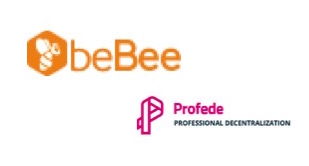Blockchain and personal data — my journey continues...
I can't help but smile about the journey that has brought me to Blockchain.
It actually started with social media and a fundamental core concern I had with it — I recall times I would get melodramatic and say, "People went to war and died for our freedoms and privacy, and we are just give it away on social media" (all rather ironic considering I'm in marketing). It's not that I didn't have a LinkedIn and Facebook page, I just never used them (not a single picture) — I was hell bent on holding onto my privacy despite myself.
One day I happened to hear Gary Vaynerchuk say, "Privacy is dead"; he was frank, compelling, and made a good argument. As I reassessed my position, I recognized he was right and that nothing was served by me spouting a conviction that wasn't real, that no one cared about, and had me stumbling backwards into "irrelevance". With the realization that at the very best I could try to control my data and privacy, I set about building a narrative for myself, reviewed which social media channels I would use, and went about developing my skills. Now I sit with a website, a couple of primary social media channels, and a couple of secondary ones for fun and learning. All of them used with the knowledge that my information can go everywhere and anywhere — with some consolation I can always be found in a sharp black suit.
Though my blogging and social media efforts I was introduced to a new affinity network called beBee which offered an open and inviting community with no networking barriers or algorithms that influenced (or restricted) my reach. It's a great environment to share information, get constructive feedback, and build impactful relationships. Fast forward a little and I was talking to someone trying to raise money who said, "If the investment pitch doesn't include the word marijuana or Blockchain no one is interested"... a week later beBee entered into an agreement with a Blockchain company called Profede. Their pitch was to bring value (and security) to professional data by building beBee off of the blockchain.
beBee is a smart entrepreneurial company so the question for me was what do they know that I don't? I jumped right in to understand Blockchain, what it can do, and can not do — and although I am only scratching the surface regarding Blockchain, I do see where beBee and Profede want to go with respect to building value for our professional data. I can't help think to myself that maybe this will all make me feel a little bit better about the compromise I made with privacy and social media a while back.
At this point I've focused my energy on social media and Blochchain, and I suppose I will try to make it an area of expertise in the big discussion that is Blockchain. In the mean time, I will keep doing my homework, set up a "myetherwallet", set up an account with the coin exchange QuadrigaCX, and with get involved with the Profede ICO. I see this as a real solution to a real problem, and although beBee and Profede aren't the only companies working on this, I do like what they've done so far.
And if by luck or universal design, as I was writing this I could not help but overhear two people discuss Facebook and their concerns about all of that private data that was released.
It has been an interesting journey so far...
iamgpe
PS — I still don't have a picture on my Facebook page and only one friend... (but it's a really good friend).




